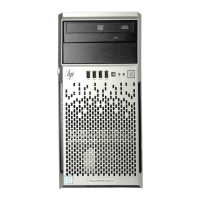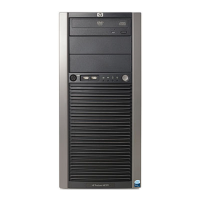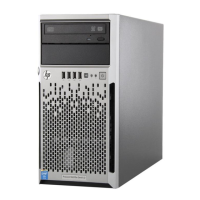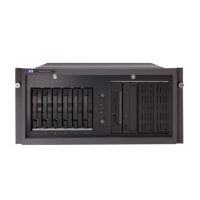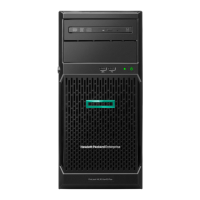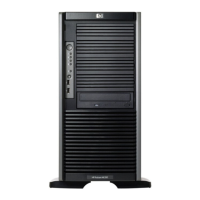NOTE:
Dynamic disks cannot be used for clustering configurations because Microsoft Cluster only supports
basic disks.
File system elements
File system elements are composed of the folders and subfolders that are created under each lo g ical
storage element (partitions, logical disks, and volumes). Folders are used to further subdivide the
available file system, providing another level of granularity for management of the information space.
Each of these folders can contain separate permissions and share names that can be used for network
access. Folders can be created for individual users, groups, projects, and so on.
File sharing elements
The storage server supports several file sharing protocols, including Distributed File System (DFS), Net work
File System (N FS), File Transfer Protocol (FTP), Hypertext Transfer Protocol (HT T P ), and Microsoft Server
Message Block (SMB). On each folder or logical storage element, different file sharing protocols can be
enabled using specific network names for access across a network to a variety of clients. Permissions can
then be granted to those shares based on users or groups of users in each of the file sharing protocols.
Volume Shadow Copy Service overview
The Volume Shadow Copy Service (VSS) provides an infrastructure for creating point-in-time snapshots
(shadow copies) of volumes. VSS supports 64 shadow copies per volume.
Shadow Copies of Shared Folders resides within this infrastructure, and helps alleviate data loss by
creating shadow copies of files or folders that are stored on n etwork file shares at pre-determined time
intervals. In essence, a shadow copy is a previous version of the file or folder at a specificpointintime.
By using shadow copies, a storage server can maintain a set of previous versions of all files on the
selected volumes. End users access the file or folder by using a separate client add-on program, which
enables them to view the file in Windows Explorer.
Shadow copies should not replace the current backup, archive, or business recovery system, but they
can help to simplify restore procedures. For example, shadow copies cannot protect against data loss
due to media failures; however, recovering data from shadow copies can reduce the number of times
needed to restore data from tape.
Using storage elements
The last step in creating the element is determining its drive let ter or mou nt point and formatting the
element. Each element created can exist as a drive letter, assuming one is available and/or as mount
points off of an existing folder or drive letter. Either method is supported. However, m ount points can not
be used for shares that will be shared using Microsoft Services for Unix. They can be set up with both but
the use of the mount point in conjunction with NFS shares causes instability with the NFS shares.
Formats consist of NTFS, FAT32, and FAT. All three t ypes can be used on the storage server. However,
VSS can only use volumes that are NTFS formatted. Also, quota management is possible only on NTFS.
Clustered server elements
Select storage servers support clustering. The HP ProLiant storage server supports several file sharing
protocols,includingDFS,NFS,FTP,HTTP,andMicrosoftSMB.OnlyNFS,FTP,andMicrosoftSMBare
cluster-aware protocols. HTTP c an be installed on each node but the protocols cannot be set up through
cluster administrator, and they will not fail over during a node failure.
34
Storage management overview
